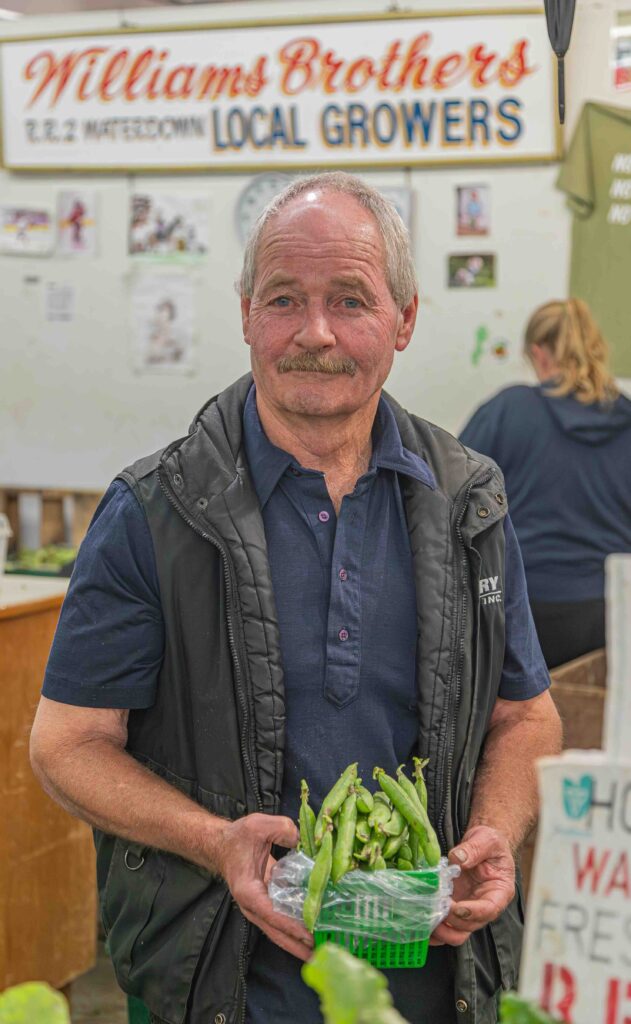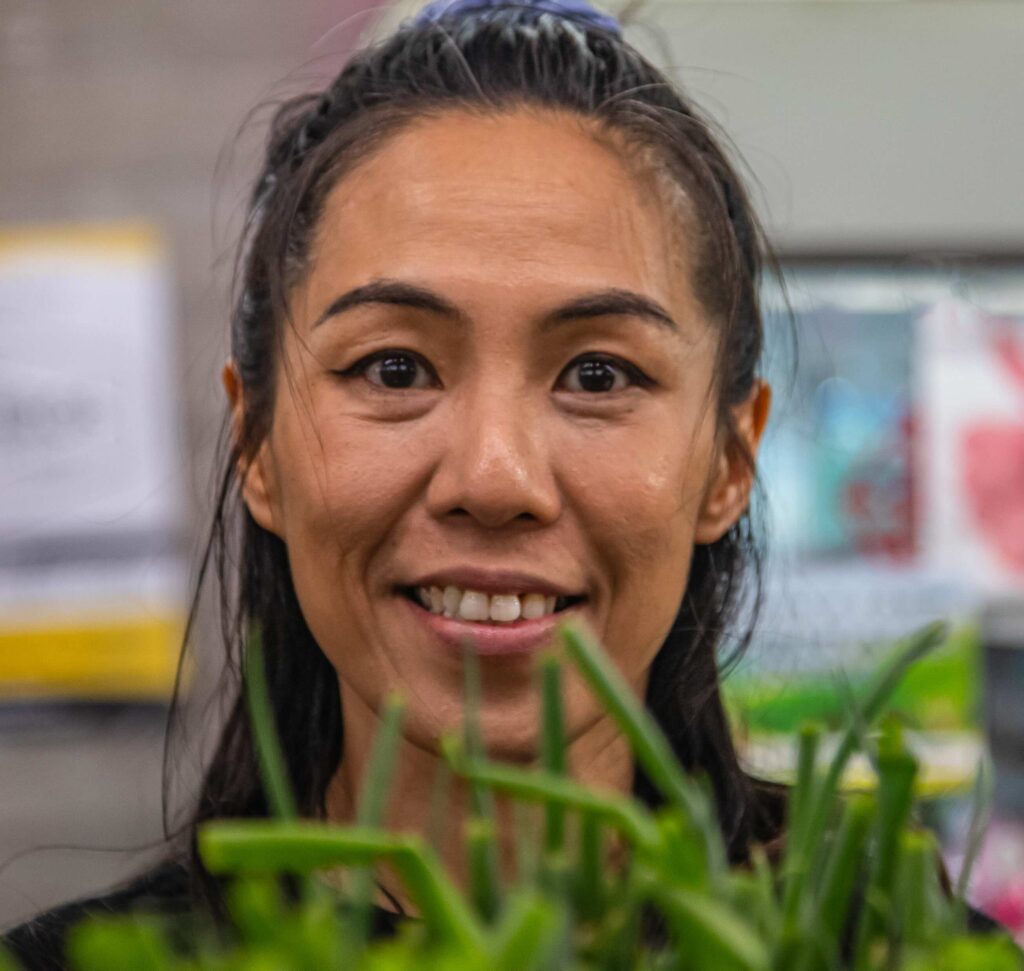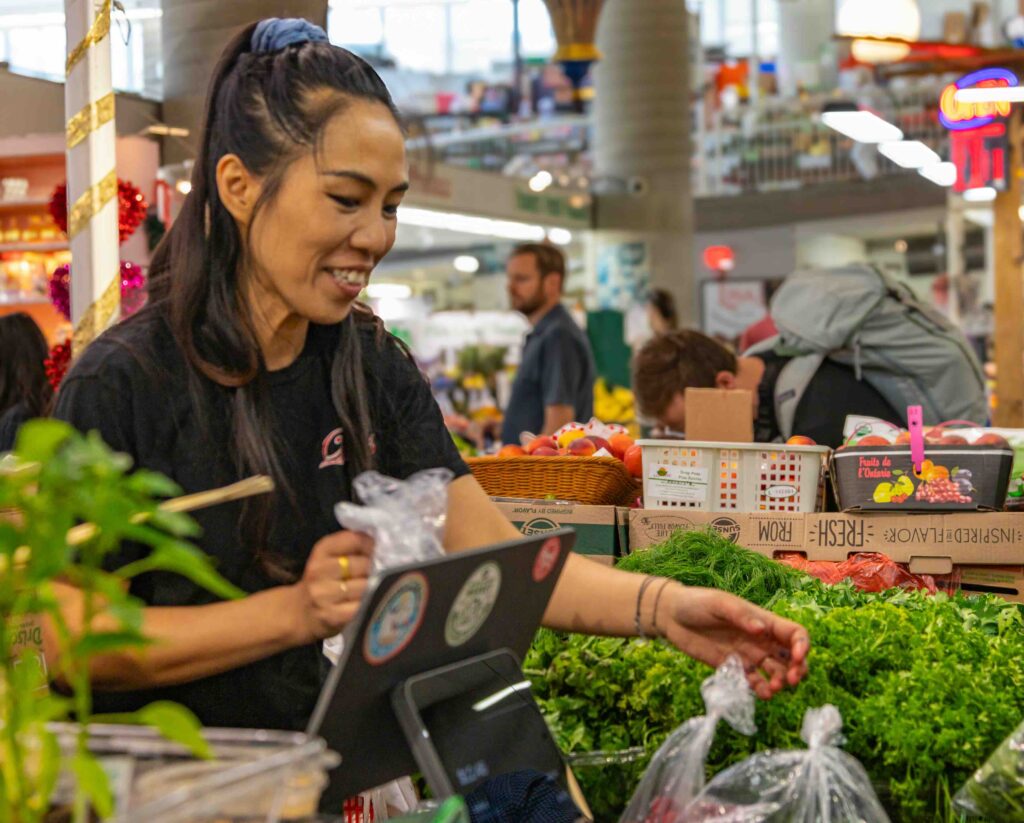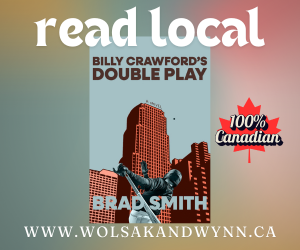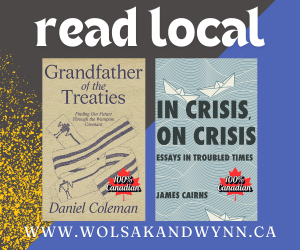Marketing a new vision
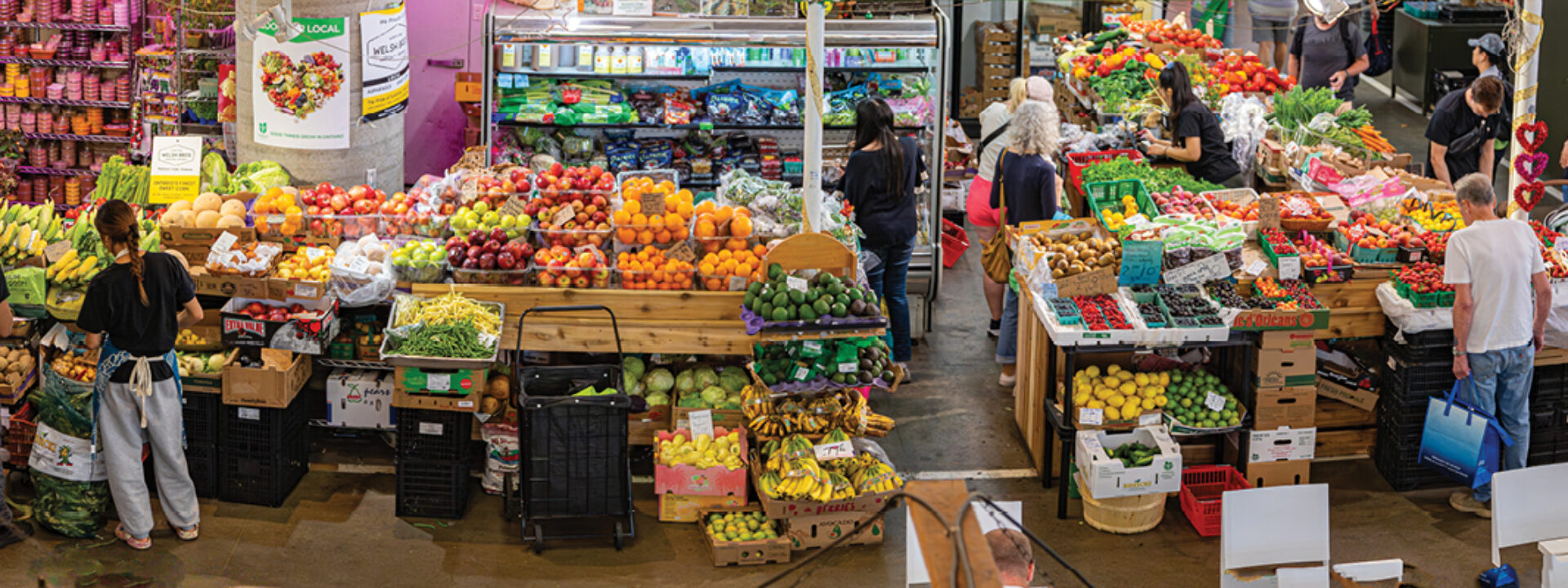
Business is looking up for the two-century-old Hamilton Farmers’ Market, but it needs to evolve, say its vendors, to meet growing demands and new opportunities. It will soon be undertaking a more entrepreneurial and independent approach as more people live and visit downtown.
It’s Saturday morning in mid-July at the Hamilton Farmers’ Market. After two weeks of brutally hot weather, the temperature is a comfortable 18 degrees. It’s a great day to do some weekend shopping or find a place for a bite to eat.
The crates of vegetables and fruit are piled high in expectation of a big crowd. “Saturdays are good at the market these days,” says veteran owner Shane Coleman, owner of Dilly’s Farmacy and vice-chair of the market’s board of directors.
The Coleman family has been operating at the market since it opened in 1837, originally selling produce from a family farm in rural Stoney Creek. The farm is gone now but Coleman and his spouse Joanne are market veterans. He says it’s been a long time since Saturday business has been this good.
“Business is back to where it was in the 1980s and early ’90s.”
The uptick in Saturday business is a relief for the 50 or so vendors that make up the Hamilton Farmers’ Market. Wednesday, Thursday and Friday traffic is still down after a sharp falloff in 2020 when the pandemic closed offices and employees shifted to working from home. An average of nearly 80,000 people per month visited the market in the pre-pandemic year of 2019. By 2023, that had dropped to 46,000.
Recently though, the iconic Hamilton institution has experienced a resurgence on Saturdays as the “foodie” revolution attracts growing attention. There’s increasing demand for fresh, local and healthy grocery items as well as one-of-a-kind snack or lunch experiences recommended by friends, family and social media. From 46,000 two years ago, average monthly foot traffic in the first six months of 2025 has shot up to almost 56,000.
U.S. President Donald Trump’s economic attacks on Canada have also played a part in the resurgence. Coleman says many of his customers appreciate that the market offers a large supply of fruits and vegetables from Ontario and other provinces, as well as non-U.S. produce.
“They don’t want to buy American,” he says. “It’ll be years before they go back to buying American.”
New development/new market
While vendors are breathing a little easier these days, there is apprehension and excitement over the market’s future. The opening this fall of the 18,000-seat TD Coliseum only a few metres from the market’s front door, alongside the impending arrival of thousands of new residents to the neighbourhood, are raising questions about what could be next for the two-century-old Hamilton institution.
The newly renovated arena is poised to bring a weekly stream of out-of-towners to the York Boulevard strip, raising opportunities for the market to provide thousands of ticketholders with pre-show food or drinks. Paul McCartney’s opening act in November is a sign of the drawing power of the arena’s roughly $300-million renovation. Further south, the Hamilton Convention Centre is also undergoing a $10-million refurbishment.
“There’s such significant investment in places like the TD Coliseum that there’s going to be so much more activity, and this is where we have a great opportunity,” says Adam Watson, the City of Hamilton’s senior program manager for the market.
At the same time, thousands of people are moving into areas of the downtown within easy walking distance of the market. McMaster University’s 600-space Bay Street residence created a bump in business when it opened in 2023, says Coleman. The 600-unit King William Rentals, opened last year, is gradually filling up. Next year, 75 James St. South is scheduled to open with over 600 units. In 2027, the Design District at Hughson and Wilson will open with over 900 units and the first tower of the Television City project will bring more than 300 units to the downtown.
“There will be so many more people living in close proximity to the market,” says Watson. “We want the market to be their grocery store. We want it to be their cultural space and their community space.”
A new vision
This vision — a community food hub for growing numbers of local residents while serving large periodic crowds of out-of-towners — is a big undertaking and a major rethinking of the market’s mandate and mission. This is a departure for the market, which has operated for decades as a program of the city government.
City council approved a plan earlier this year to establish a new board and management, scheduled to be put in place next year. The idea is to create a board that will have governance responsibility for the market and to make it more financially independent from the City. The board will also take responsibility for hiring a new entrepreneurial chief executive to manage the market.
It's expected the new board and management will follow recommendations from a visioning report two years ago for the City by Project for Public Spaces (PPS), a New York-based community development firm. The findings are based on a consultation with vendors, customers and stakeholders.
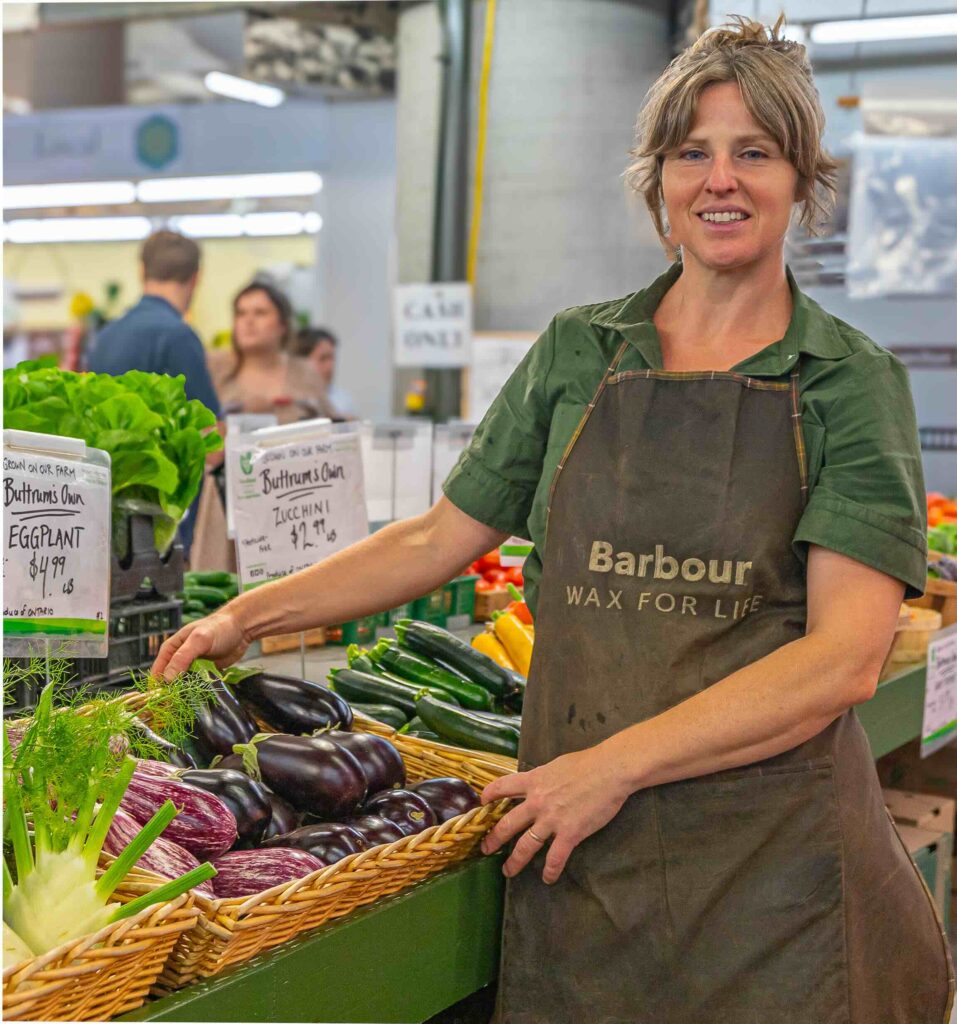
The key recommendation is to allow vendors to be flexible in the days and hours they’re expected to be at the market. Kierin Gorlitz, co-owner of eighth-generation Buttrum Family Farm, says the Wednesday-to-Saturday schedule doesn’t work for family farmers like her and her spouse Gary Buttrum. Buttrum is only one of two full-time family farm vendors still at the market (the other is Williams Brothers). Farmers need to be in the field during the week, she says, so that they can provide the freshest possible produce for their customers, most of whom are at the market on Saturdays.
The PPS report says the market should invite more family farmers to become Saturday vendors, perhaps even spilling out onto York Boulevard in warm months. The market is piloting this concept with some success through its recent Showcase program, featuring local producer pop-ups like honey-maker Humble Bee, and Summit Station Dairy, an on-farm milk producer.
The report advocates that vendors who provide non-perishable, specialty, takeout or sit-down foods be invited to have longer, more flexible hours. The PPS study says the market should be the centre of the local food movement in Hamilton and should serve as a gathering point and resource for the community. To that end, the report calls for additional educational programming and a licensed market café, perhaps staying open throughout the week and on Sundays and evenings.
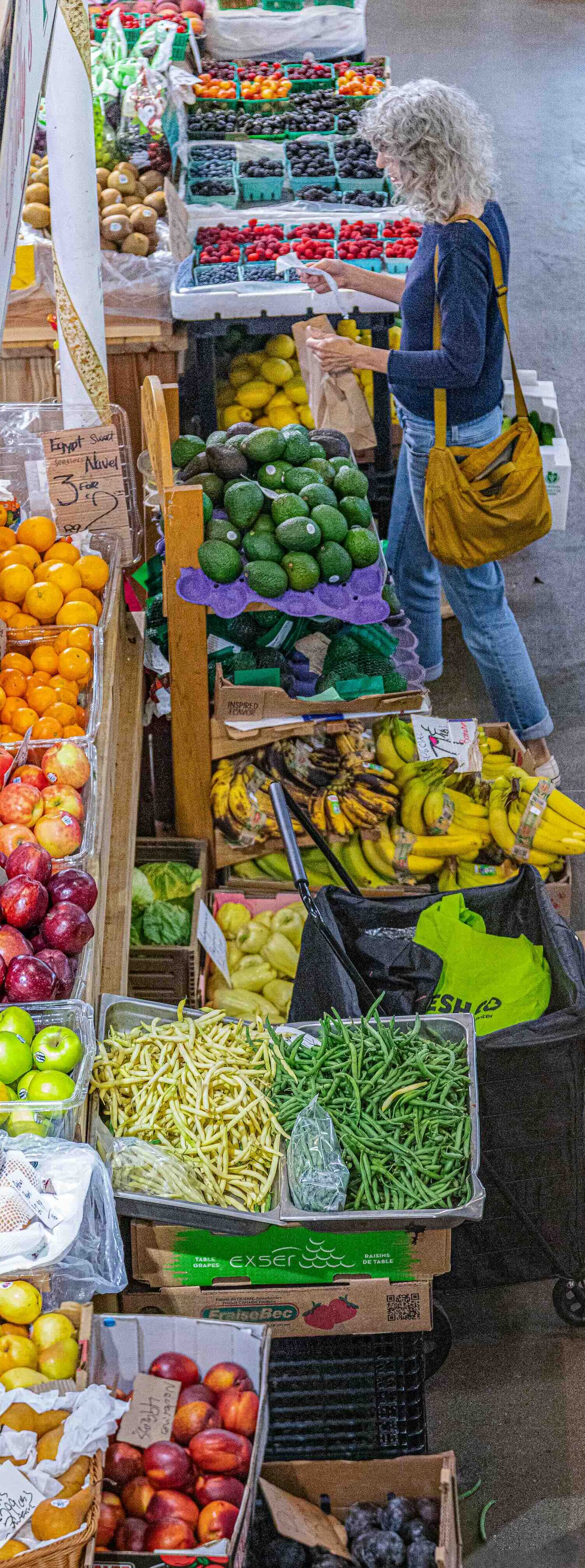
Too much/not enough
Gorlitz says the PPS vision could serve the needs of both family farmers and prepared food vendors and their customers. “The people who want to be here more are not here enough,” she says. “The people who want to be here less are here too much.”
Former chef Jeff Pychel, owner of Market Bakery and president of the vendors’ association, says it will be a challenge to implement the proposal, but it is critical for the future of the market. “I think you have to think out of the box. The status quo isn’t necessarily working.”
Extra seating and food preparation stalls with exhaust hoods need to be added, he says. There’s also a lack of outdoor signage directing people to the market’s food vendors. This will be hugely important with the opening of the TD Coliseum, which will have its own 185-seat bar and restaurant owned by popular restaurateur Matty Matheson, a chef and actor on the U.S. TV show The Bear.
Crucially, the market also needs to ramp up its messaging, creating more opportunities for vendors to get their stories out. What the market needs is more attention from people like rising food celebrity Pete Earley, a Nova Scotian who covered the market this summer on his Instagram and TikTok videos, raving about the French-style croissants from Chaton, jackfruit croquettes from SAU Bake and tacos from Latin Food.
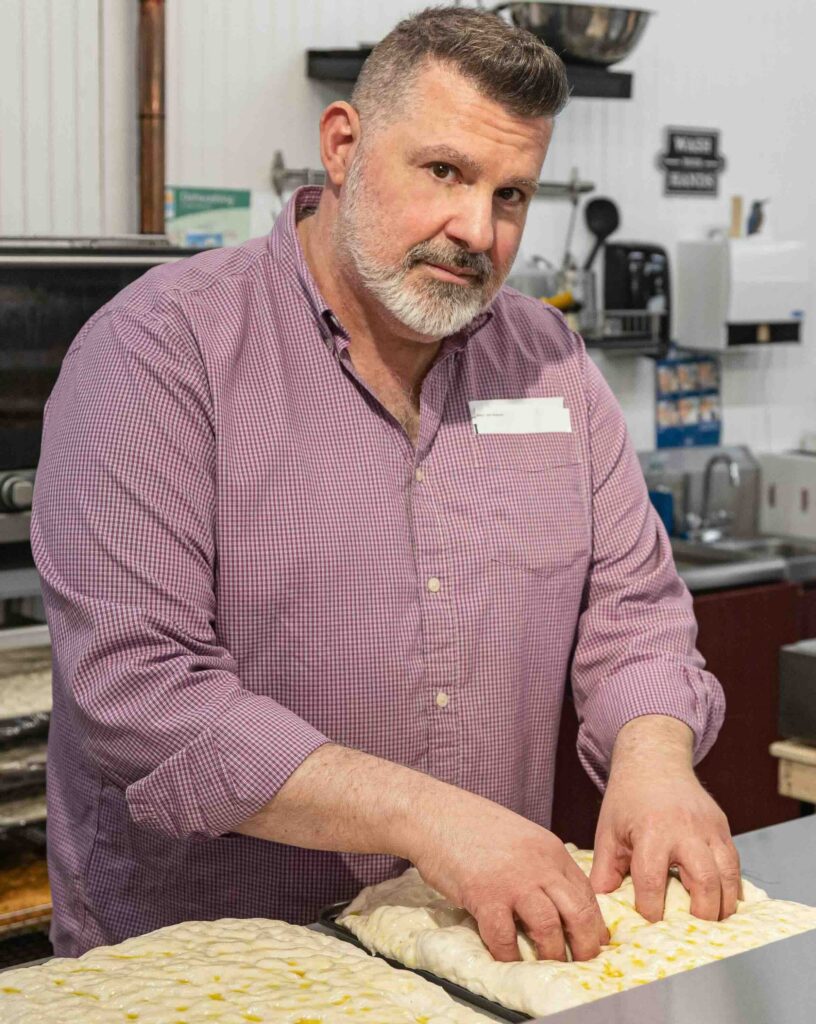
Photo: Lorry Cumming for HCM
Further complicating the market’s image is the general belief, especially among people who don’t live downtown, that the city’s core is not safe. This stereotype was tragically reinforced when innocent bystander Belinda Sarkodie was shot and killed on King Street in July. The PPS report recommends that the market support neighbourhood safety efforts, which are already underway through a Hamilton police program to bolster patrols in the core.
The unsafe image of downtown Hamilton is a particular concern for Kristy van Beek, former Torontonian, biologist and healthcare entrepreneur, who now operates market vendor Apothecary Kitchen, an award-winning vegetarian soup and stew business inspired by her personal experience with cancer. She says the challenges facing central Hamilton are similar to the struggles that downtown Toronto faced 30 years ago.
“There were parts of Toronto that people called unsavoury or no-go zones,” she says. As more people moved downtown, the mood changed. She predicts the same thing will happen in Hamilton. “I see a lot of opportunity for development in the core and for this to become a very vibrant part of the city again in the future.”
Pychel agrees, saying the TD Coliseum and residential development will create safer, busier streets, crafting conditions for the market to be successful. “I think you’re going to see a rebirth of the market. I’m very optimistic, but you know, it’s going to take time.”
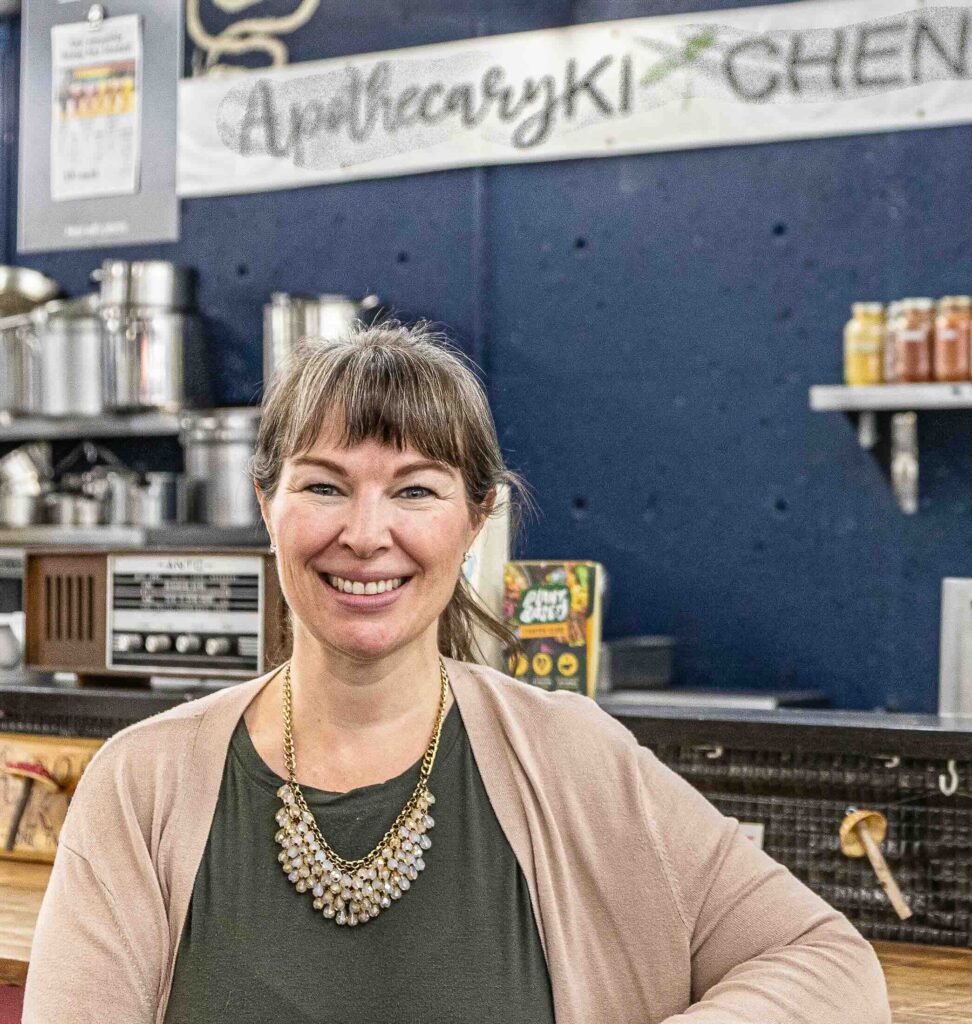
Photo: Lorry Cumming for HCM
Hamilton Farmers’ Market: A history
In its busiest years — the 1920s — the Hamilton Farmers’ Market was reputed to be the largest open-air market in Canada. In 1922 alone, an estimated 10,000 vendors sold produce, meat, cheese, eggs, dairy products, household items, even livestock, from the sprawling downtown square, historian Michael Quigley wrote in his book, On the Market.
The market opened in 1837 after Andrew Miller and his spouse Mary transferred to the city an apple orchard on James and King William Streets to be used as “a respectable market to be built in a suitable and central place.”
From the 1840s to the early 1900s, the market evolved into a hodgepodge of farmers, butchers, bakers and other local producers who assembled with horse-drawn wagons, Ford Model Ts, and farm trucks in the open-air lot and within a succession of market buildings. In 1917, fire destroyed the city hall and the most recent market building. Demands of the war resulted in a decision not to rebuild, creating a huge outdoor space that would result in the hurly-burly market of the Roaring ’20s.
But it wouldn’t last. Much of the lower city population that had supported the market moved to the suburbs above the escarpment after World War II. City planners also objected to the traffic congestion of the three-day-a-week market at a key downtown intersection. “The outcome in the 1950s,” wrote Quigley, “was open warfare between the city’s traffic department and the market.”
A carpark with a ground-level open-air market and parking above opened in 1961 with a dramatically reduced number of stalls. At first, it was popular, but foot traffic fell off. In the 1970s, the carpark was demolished to make way for the new Eaton's shopping centre and in 1980, the market was relocated to a two-floor fully-indoor facility, where it still operates.
After surviving the COVID pandemic, the market is looking toward a renaissance, although not on the scale of the 1920s, but rather a return to its importance as the central place where people buy and sell food in a revitalized downtown.
Eugene Ellmen writes about sustainable business and finance. He lives in Hamilton.
